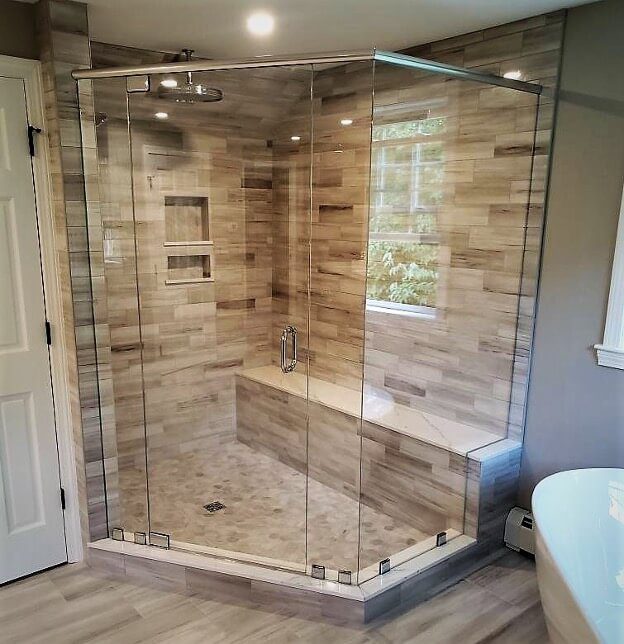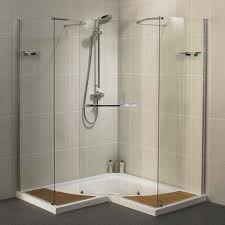Professional Insights on Installing a New Shower Unit
Professional Insights on Installing a New Shower Unit
Blog Article
The publisher is making a few great points related to How to Build a Shower Enclosure for Your DIY Bathroom in general in this content following next.

An effective shower setup needs cautious planning and a great deal of work. For the most part, you will require to do 3 sorts of tasks: mounting walls, installing the plumbing, and also completing walls.
Preparation
To start with, you should choose the type of shower that you want to install. It is necessary to identify whether the picked shower is capable of coping with particular systems as well as can manage a secure degree of water via the boiler. The majority of shower systems nowadays are developed to be adaptable to various water pressures (such as stored warm water and also cool mains).
It is also essential to take into account the water pressure and the planning of the piping and drainage for the shower
Various Kinds Of Shower Units
Approach
Relying on the sort of shower you desire to mount, the shower head should either be fitted in order to avoid its contact with the water in the bath below or the base tray, or it has to have a check shutoff.
Before beginning, it is suggested to mark the positions of the shower head and also control, and to plan the pipe-work included. Additionally, the drainage system to eliminate the waste water will need to be prepared. Both positions of the cable path and the shower button will certainly additionally require to be considered if a rapid or electric shower unit is being installed.
Make use of the direction guide given with the shower unit to fit the shower control.Before suitable the pipelines that will supply the water to the shower system, it is important to remove the supply of water. In order to safeguard the pipes, they need to be given a water resistant covering as well as additionally fitted with separating shutoffs. The pipes can after that be buried right into the wall and plastered over to neaten the total appearance.
Fit the base tray, shower head, and fittings.
Attach the main shower control to the pipes that will certainly be supplying the water (This might require a women screw thread adapter).
Reconnect the supply of water and examination the pipelines for any type of leakages, as some might need firm.
If you are setting up an electric shower, remember to switch off the electrical energy supply before making any electrical links. As soon as these connections have actually been made (there should be assistance within the instruction manual), the power supply can be changed back on.
Changing Water Stress to Fit Your Shower
The cold water storage tank can be raised to a better height (sometimes as low as 150mm (6inches)) by installation a solid wooden assistance below it - possibly made up of struts as well as blockboards. If you pick this alternative, the major as well as distribution pipes will also have to be increased to satisfy the brand-new height of the reservoir.
Additionally, a booster pump (a solitary pump or a dual/twin pump) can be fitted. Whichever kind is picked, it needs to be attached into the power supply in order to run.
Piping and also Drainage
It is best to make use of 15mm diameter supply pipelines, and also make the runs to the shower as short as well as straight as feasible so as to preserve optimal pressure and minimise heat loss. Additionally, by reducing using elbow joints for pipe edges, you can reduce the resistance in the flow of the water supply. You can accomplish this by bending the pipes rather.
Most Common Mistakes
How Do You Install a Shower? Follow This Guide
Installing a Shower at a Glance
Tools & Materials: Level, electric drill, caulk, hole saw, cedar shims, shower unit Step 1: Drill pilot holes Step 2: Prep fixture holes Step 3: Move unit into place Step 4: Caulk corners and base Step 5: Attach door Step 6: Install shower pan Whenever plumbing is involved in a DIY project, people worry about what might go wrong. The truth is that installing a shower isn’t that complicated, and you can save a lot of money by doing it yourself. You shouldn’t need to make any alterations to your plumbing to complete the job, and most of the tools you need will be provided in your new shower kit.
Can I Install a Shower Myself?
Even if you’ve never installed a shower before, you’ll find this to be a project that is perfectly suited for DIYers with a moderate level of experience. Whether you're doing a bathtub conversion or installing a new stall, most of what you need comes in shower kits that you can purchase from a hardware store. The first thing you need to do is determine what type of shower stall you want.
Single-panel stalls are the easiest to install because they come preassembled. All you need to do is put them in place. Multi-panel showers require a few additional steps, but you’ve got more control over the appearance of your unit. Multi-panel units are also much easier to handle if you’re going to do the installation without any help.
Be sure to take all appropriate safety precautions, such as wearing eye protection and gloves. When you’re removing or installing a shower unit, you might kick up debris that could hurt your eyes. You’ll also need to work with equipment that will get extremely hot, so be sure to have safety gloves handy.
Tools and Materials
2- to 4-foot level Electric drill with a 1/8-inch drill bit Caulk 2-inch hole saw Cedar shims The unit itself Before You Begin: Prep the Space
It’s highly important to measure your space accurately before putting the stall in. Measuring from the floor upward and from each corner outward will ensure you’ve got the right measurements. What you’re looking for is where the plumbing apparatuses are going to come through the stall. Transfer these measurements over to the back of your unit by drawing the locations of these holes using a pencil or marker.
Pull out your old shower and make sure to scrape off all the old caulking. Be thorough because you want to work with smooth surfaces for the best installation. Once you’ve pulled out your existing shower, you need to make sure that the floor is clean and dry. The best way to clean debris is with a shop vacuum, as it’ll soak up water and dirt together.
If you’re experiencing any plumbing issues, such as low water pressure, this is a perfect opportunity to solve them. Make sure that the pipes themselves are not in need of patching and clean your showerhead. When you turn the water back on after your project, check the pipes for signs of wear or disrepair. Anything beyond minor repairs should be handled by a plumber, and this is the best time to bring in a professional.
If the floor has any moisture at all, don’t proceed until it’s completely dry. The last thing you need is for the floor to rot or invite mold and mildew into your base. Once everything is dry, apply waterproof wallboard to the walls. This can be attached with screws or nails, then sealed with caulk so that water doesn’t seep into any crevices.

I discovered that review on How to Install a One-Piece Shower Unit when doing a search on the web. Enjoyed our blog posting? Please share it. Let somebody else check it out. I take joy in reading our article about How to Install a Freestand.
Click Here Report this page